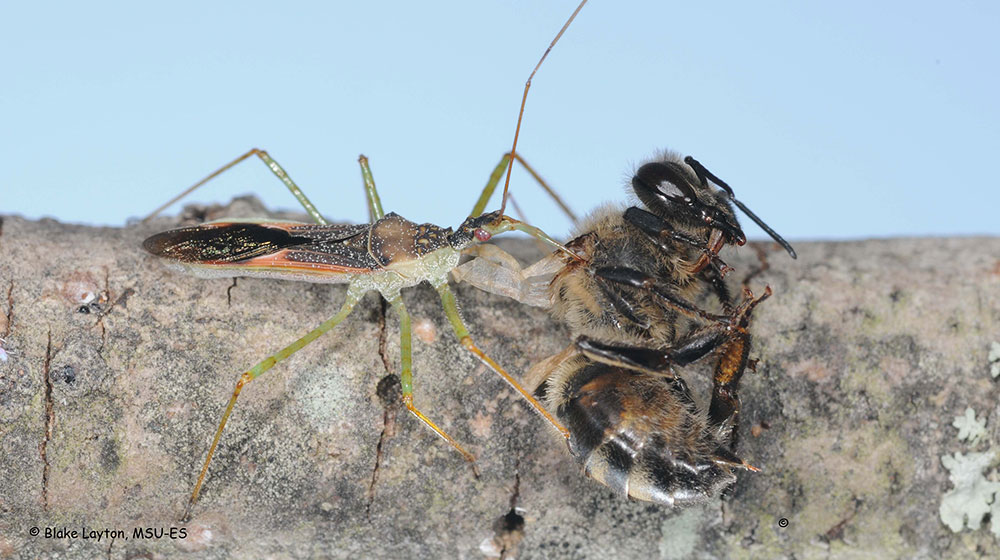Assassin Bug, No 18
Related News
August 4, 2011
June 8, 2011
May 12, 2011
April 28, 2011
April 21, 2011

Zelus spp.
Order: Hemiptera
Family: Reduvidae
Assassin bugs belong to a large group of “true bugs” that prey on other insects. They use their piercing-sucking mouthparts to inject a toxic saliva into the prey, which helps subdue the prey and pre-digest it, and then they suck up the resulting body fluids. They are surprisingly efficient feeders. One study found that Zelus renardii, which is sometimes referred to as the “leafhopper assassin bug” was able to consume 72 to 99 percent of the body weight of caterpillar prey like tobacco budworms. There are hundreds of species of assassin bugs here in the US and most hunt as ambush predators. Members of the genus Zelus also have sticky hairs on their front legs that help them capture small prey such as tiny flies or leafhoppers. This adult Zelus probably did not make much use of these hairs when capturing this honeybee; this feature is more useful to the nymphs in capturing the smaller prey they prefer to feed on.
Assassin bugs are general predators, which means they readily feed on any insect they are able to capture without considering whether or not it is a pest. From an anthropocentric point of view, most assassin bugs are not especially beneficial because they are rarely numerous enough to have really significant impacts on pest insect populations. However, because caterpillars are relatively easy to capture, many assassin bugs readily feed on caterpillar pests when they find themselves in a field or garden with a heavy infestation.
Assassin bugs can and will bite humans if mishandled or inadvertently trapped between skin and clothing, and their bites can be quite painful. Because of the saliva they inject, the bites of some assassin bugs are as, or more, painful than a bee or wasp sting.
Blake Layton, Extension Entomology Specialist, Mississippi State University Extension Service.
The information given here is for educational purposes only. Always read and follow current label directions. Specific commercial products are mentioned as examples only and reference to specific products or trade names is made with the understanding that no discrimination is intended to other products that may also be suitable and appropriately labeled.